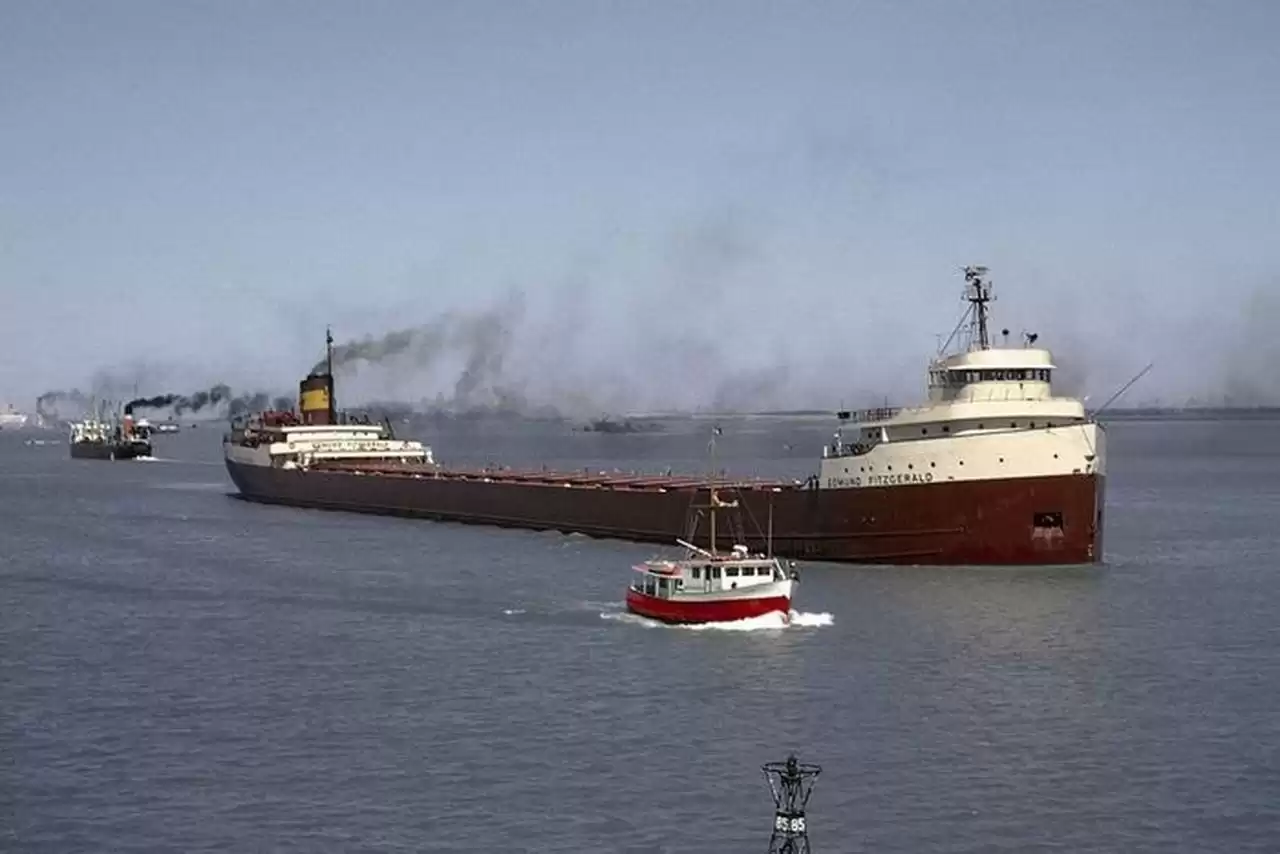48th Anniversary of the Sinking of the Edmund Fitzgerald on Lake Superior
Gordon Lightfoot's 1976 song about the sinking of the Edmund Fitzgerald keeps the legend alive 48 years after the tragedy.
The song "The Wreck of the Edmund Fitzgerald" by Gordon Lightfoot, released in 1976, tells the story of the sinking of the Edmund Fitzgerald on Lake Superior on November 10, 1975, which resulted in the loss of 29 lives. It has been 48 years since this tragic event, and the legend of the Edmund Fitzgerald still lives on. While there have been other deadly disasters on the Great Lakes, the Edmund Fitzgerald is the most famous, largely due to Lightfoot's song, which was a huge hit for the artist. The ship was named after Edmund Fitzgerald, the president of Northwestern Mutual Life Insurance Co., and was the largest freighter on the Great Lakes when it was christened on June 8, 1958.
The ship's final journey began on November 9, 1975, when it set out from Superior, Wisconsin, loaded with more than 26,000 tons of iron-ore pellets and bound for Zug Island near Detroit. Captain Ernest McSorley, aware of the building storms on the lake, decided to take a northerly course along Lake Superior to seek protection from the highlands on the Canadian shore. The Arthur M. Anderson was following about 17 miles behind, and both ships were aiming to reach Whitefish Point, Michigan, for shelter.
Gale warnings were issued on November 9, and these were upgraded to a storm warning in the early morning hours of November 10. Conditions worsened, with winds gusting to 50 knots and seas reaching 12 to 16 feet. By 3:30 p.m. on November 10, McSorley radioed the captain of the Anderson, Bernie Cooper, informing him that the Fitzgerald was listing. The ship continued to face worsening conditions, with a steady wind of 58 knots, gusts up to 70 knots, and seas of 18 to 25 feet.
The Anderson experienced a major scare just before 7 p.m. when two huge waves engulfed the entire ship from astern, driving its bow down into the lake. The ship was able to stay upright, but Cooper believes these waves were what ultimately sank the Fitzgerald. The last communication with the Fitzgerald came at 7:10 p.m. when McSorley radioed to a crew member on the Anderson, saying "We are holding our own."
The ship sank about 17 miles north-northwest of Whitefish Point, where the Shipwreck Museum is located. There are several theories about how the ship sank, including rogue waves, structural failure, shoaling, or the flooding of the cargo hold. The Shipwreck Museum is holding a ceremony for the Edmund Fitzgerald at 7 p.m. today, which will be available on a livestream.











Comments on 48th Anniversary of the Sinking of the Edmund Fitzgerald on Lake Superior